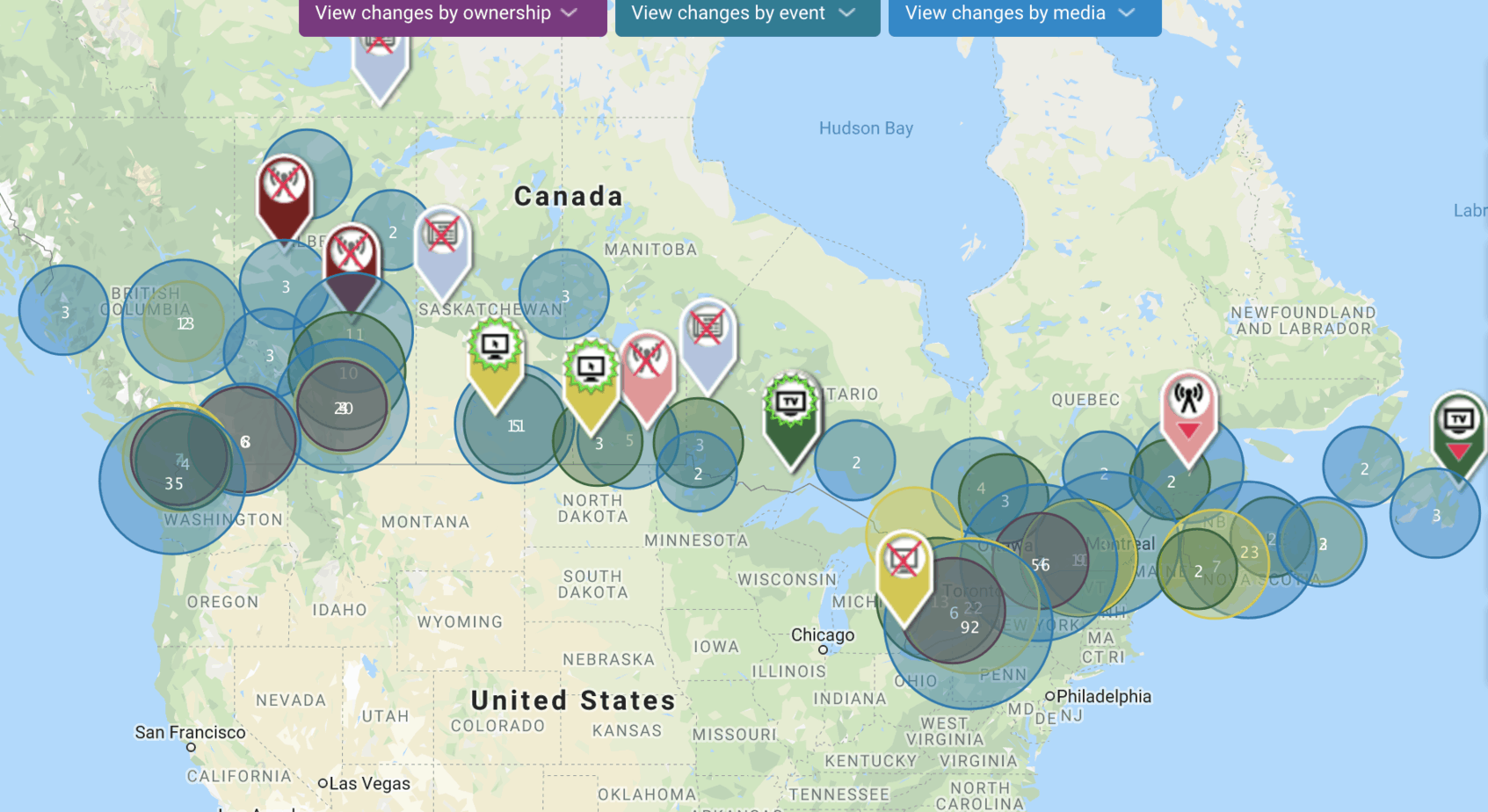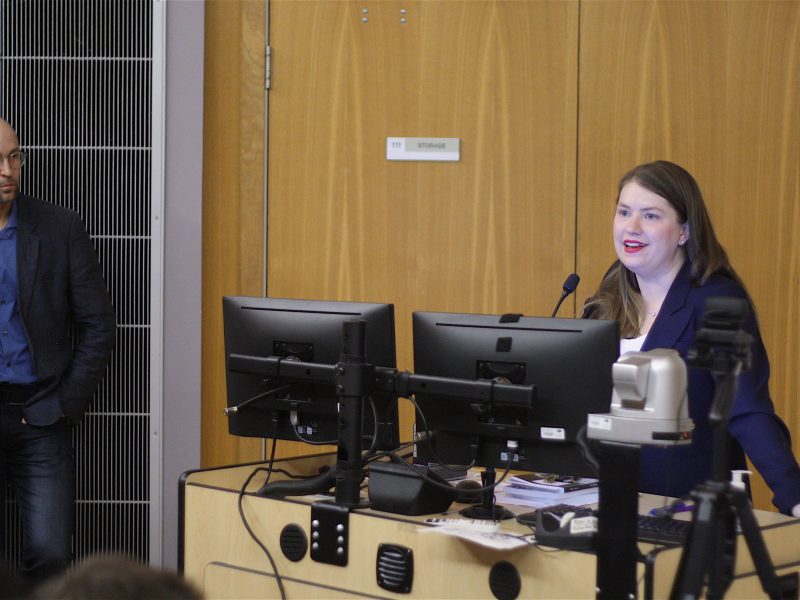
The first question our team always gets asked about The Discourse, the journalism company we’re building to reimagine the community newspaper, is: how do you fund your journalism?
It’s no wonder. Local outlets are in steep decline —275 have closed in the past decade in over 190 communities in Canada. If they can’t make a go of it, how is The Discourse doing it?
But the fall of local news doesn’t indicate a decline in demand for trustworthy journalism. If anything, demand is up. It’s not the news that is dying — it’s the news industry’s advertising business that’s dying. It’s been completely disrupted by Google and Facebook, with news publishers getting only about a dime for every dollar in digital advertising the social media platforms pocket.

I strongly believe that there is a future for local news. So many people agree that we need local journalism to have healthy communities. Case in point: Isabel Rimmer, a member of The Cowichan Discourse community, wrote me an email last week about how much she values dedicated reporter Jacqueline Ronson. She referred to the “BJR” era (before Jacqueline Ronson), explaining, “we literally had no voice outside of social media.”
Even with its challenges, the global news media industry still generated an estimated $150 billion in circulation and advertising revenue in 2017. That’s not going to disappear overnight, especially with demand from members of the public like Isabel.
This is why The Discourse has staked its future on directly serving the public. Our business model is based on a simple concept: that people will pay for journalism that matters to their community.
Today, we launched a campaign asking our community members to become financial supporters and pitch in $15 per month (or whatever they can afford) to get us closer to sustainability. We think it’s important to be transparent about our sources of funding if we’re asking them to share their hard-earned dollars with us.
This article is supposed to be about how The Discourse is funded. So why am I spending so much time laying out the business case and landscape? Well, the reality is that the majority of our funding doesn’t come from our communities — yet.
Two and a half years ago, we decided to shift away from project work and take a big risk. We wanted to build a model for in-depth journalism that could scale to fill the gap left by the decline of newspapers. (You can read about how we were funded before in this transparency piece from 2016). That meant raising capital to build a media platform, grow our audience and experiment with different revenue models to forge a path to profitability.
We survived this long by raising money from investors, value-aligned partners, family, and our community members, who pooled together funds to become owners of our company. These people bought into our belief that the future of news will be people-powered and made a bet that we can build The Discourse from the ground up into something valuable enough that our community will pay for it.
Why did we decide to build The Discourse as a for-profit digital startup, rather than a non-profit? It’s not because we’re trying to get rich but because our ambition is to make a huge impact on journalism and democracy. When we considered the challenges facing the news industry, we thought the best way we could contribute to the future of news would be to develop business models that could scale. We don’t think there is enough charitable money in Canada to fund all the journalism Canada needs. And so we are developing a replicable business model that can scale to hundreds of communities in Canada and beyond.

What we didn’t know when we started on this new path was how hard it would be to raise investment capital. Only 2.2 per cent of venture funding goes to female-led companies. We don’t have a super-rich person or a big corporation behind us. And so we’ve been scrappy, pieced together investment from lots of different sources, and asked for help from family members and our community.
Since we set out on this path two-and-a-half years ago, we’ve raised more than $1.3 million in investment capital. Some of that is debt. Some is equity, meaning investors bought shares in the company. Here are our sources of investment:
- 24 per cent from community members who pooled money together and became owners in our company through a crowd equity campaign.
- 20 per cent from three individual angel investors who believed in our vision and team at a very early stage.
- 20 per cent from two funds dedicated to tackling gender equity in investment: SheEO and Marigold Capital.
- 20 per cent from my family members.
- 10 per cent from digital partners, the Canadian Film Centre and Good Digital Culture, in the form of technology and digital marketing services they paid for in exchange for shares in the company.
- 6 per cent in a term loan from TD Bank.
Over a million dollars might seem like a lot (it sure did to me when we set out with the goal of raising it) but in the context of starting a journalism organization, it doesn’t go as far as you might think. To put it in context, ProPublica, an American investigative journalism nonprofit, started with a commitment from the Sandler Foundation to put up $10 million a year for its first three years, and it now has a $24 million annual budget. The Globe and Mail just announced plans to trim $10 million from its annual budget.
In contrast, The Discourse’s 2019 budget is about $1.2 million. Here’s how we spend it:
- 59% pays salaries, benefits and freelance fees to our team of 10 journalist employees, contractors and interns.
- 13% covers labour for our data and technology team.
- 12% funds overhead like office space and software.
- 9% goes to other labour, including our lawyer, and bookkeeper.
- 7% goes to marketing expenses.
These resources go to:
- Delivering weekly in-depth journalism in our first three communities: Scarborough, Urban Nation and Cowichan Valley.
- Producing deep dives — major, nationally-relevant investigative projects surfaced by our community members — such as our ongoing coverage of child welfare.
- Convening events that make an impact on Canadian media, like these workshops where we brought together journalists to explore how to tackle misinformation and hate.
- Developing a replicable model for in-depth local journalism, including research, experimentation and technology development.
- Contributing to a more sustainable and diverse media system by, for example, advocating for better journalism policy and mobilizing independent media.

Investment capital isn’t our long-term plan. We’re being transparent about our sources of funding right now because we’ve just launched a campaign asking our community members to become monthly supporters. Our investors have afforded us the runway to build up our business, but our startup funding will run out soon.
Our goal is to grow sustainable revenue from the communities we serve. We believe if we are to be 100% accountable to our communities, we need to be funded by them. At the same time, if we’re going to ask our community to fund us, it’s important we are fully transparent about where our money comes from, how we spend it, and who stands to benefit if The Discourse makes money one day.
We generate revenue from our communities in two ways: first, value-aligned partners sponsor our communities and deep dives, major investigative projects on topics identified by our communities. Currently, we generate about $600,000 annually, which covers 50 per cent of our budget. To protect the integrity of our journalism, we ask our partners to sign an independence clause in all contracts and we are transparent about their support. (You can read how we maintain independence from our partners here.)
The second, and most important, part of our plan to achieve funding sustainability is to grow the number of monthly supporters to the point where they contribute the majority of our funding. We strongly believe that The Discourse’s journalism should be accessible to everyone; that’s why our work isn’t behind a paywall. But that model only works if those who can afford to pay, actually do.
The campaign launching today aims to reach 1,000 monthly supporters by June 15. Hitting 1,000 supporters is a huge milestone that will demonstrate to our investors, community members and ourselves, that we’re on the right track, providing a valuable service people are willing to pay for. That won’t cover all our costs. In the future, we want to be majority community-funded by our community members — 3,600 monthly supporters (1,200 per community) would cover more than 50% of our budget. We know it will take time to build trust and grow our audience.
Will enough of our community members choose to support us that we can keep delivering our in-depth journalism? This is The Discourse’s moment of truth. Follow our progress or pitch in yourself here.
If you have any questions or comments about our funding, get in touch with me at erin@thediscourse.ca. As always, we’re listening. [end]



